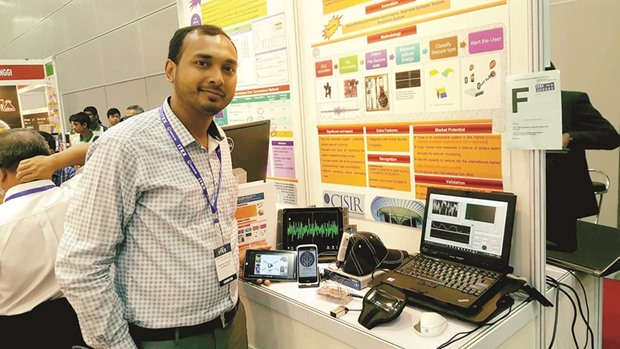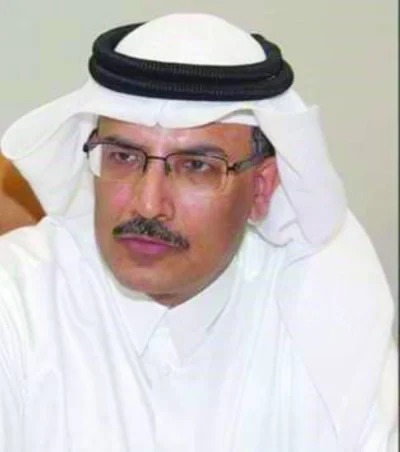At the 27th edition of ITEX, one of the largest invention exhibitions in the world, earlier this month, Qatar-based Indian expat Mohamed Shakir bagged the Gold medal for his ingenious invention – a life-saving seizure prediction device that certainly glitters a lot more brightly than any gold.
A showcase of the finest inventions from Asia and Europe and featuring bright minds from more than 20 countries, the 27th edition of ITEX (International Invention & Innovation Exhibition) at Kuala Lumpur, Malaysia, awarded Shakir the Gold medal in the category of Innovative Product Design and Invention for his portable and precise Seizure Prediction Wearable Gadget.
While this is big news for Shakir, the accolades and acclaim are certainly not new. After graduating with Bachelor of Technology from Calicut University-MES College of Engineering, Kerala, Shakir continued his studies at Washington University in the US, where he gained a Master’s of Science. He then went on to earn a PhD from Petronas University, Malaysia, in Electrical Engineering.
Shakir has published more than 30 international scientific research papers and journals in areas such as robotics, human-robot interaction, biomedical systems, and so on. His areas of expertise include innovation, research, business intelligence, programming, embedded product development, electronic product design, IIoT, IoT, Artificial Intelligence, automation, virtual reality and image processing.
His list of accomplishments are lengthy but worth mentioning. He has filed five patents, has been a TED Talk speaker, winner of the PAN-Arab Microsoft Imagine Cup 2014, and a mentor for the World Microsoft Imagine Cup for the development of Gladiator Robotic System. He has also invented the well-received Heart Attack Prediction Wearable Gadget. Using innovative technology, Mohamed has also helped people with learning and physical challenges. This includes training sessions, wearable gadgets, robots and many other devices.
Since 2014, Shakir has worked as an IT Skills Development Manager at Qatar Airways, before which he was a Research Faculty at Qatar University for five years. He has worked as a Robotics Engineer for the government of Qatar and as a Project Engineer at Wipro Technologies, India. In addition, he has worked as a consultant at MADA-ICT Qatar, Qatar Scientific Club, Texas A&M QF, QSTP, EADS-Airbus, QMIC amongst others. Community caught up with Shakir for a quick chat.
How did you come up with the idea for this seizure prediction device? Also, why did you feel the need to make it?
Few years back, I came across a news story of a baby’s death in the US due to a sudden seizure suffered by the baby’s mother while she was holding the baby. This story made me think about the issue of seizures, find out more and find a solution for it. Epilepsy is a chronic non-communicable disorder of the brain that affects people of all ages. Approximately 50mn people worldwide have epilepsy, making it one of the most common neurological diseases globally. Nearly 80% of the people with epilepsy live in low- and middle-income countries. People with epilepsy respond to treatment approximately 70% of the time. About three-fourths of people with epilepsy living in low- and middle- income countries do not get the treatment they need. In many parts of the world, people with epilepsy and their families suffer from stigma and discrimination. This made me feel that there is a big need for a seizure prediction device for people.
What sort of challenges did you encounter in creating this device?
My main challenges when building this product were cost efficiency, reliability and accuracy. After five years of testing, research, hard work and determination, I was able to build it with a price tag of less than USD100 with an accuracy of more than 97%, and prediction duration for up to before three minutes of actual seizure in the patient, which I’d say is a breakthrough in biomedical engineering. My next big challenge will be to make this product for the patients around the world.
How will this Gold prize change things for the better for your invention and for your future innovations?
This Gold Medal in the category of Innovative Product Design and Invention at ITEX 2016, is definitely an inspiration and honour for the hard work and pain I have gone through to turn my dream into a reality. This also motivated me a lot to push my boundaries, keep on moving and to aim for bigger – for the Nobel Prize, maybe.
How do you plan to make this product accessible to the public?
Currently, the business plan is to manufacture this wearable gadget in China with all the ethical and federal approval needed launch to the market. Hopefully, by mid-2017, we can put it out there for a price tag less than USD100.
Will you keep trying to invent interesting products in the future?
Yes, of course. I have already started working on developing a diabetes prevention device. I’m also setting up a vision for building an eco-system for pure energy.

GOLD STANDARD: Mohamed Shakir shows the gadget he created, at ITEX 2016.


